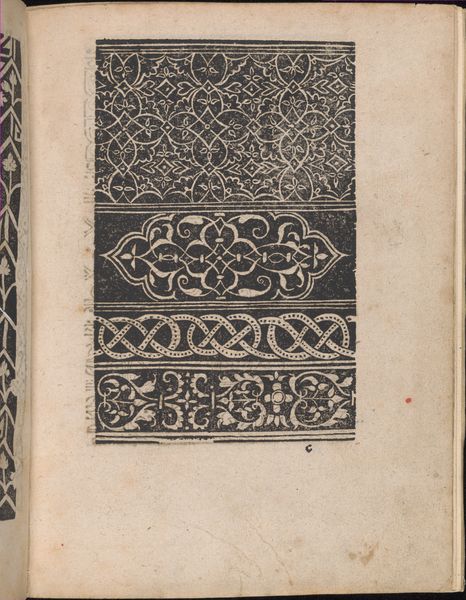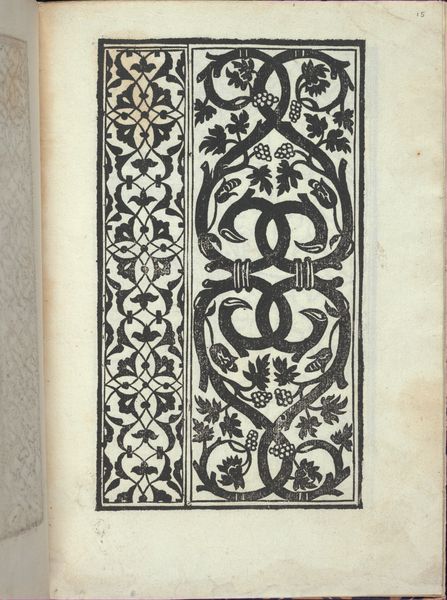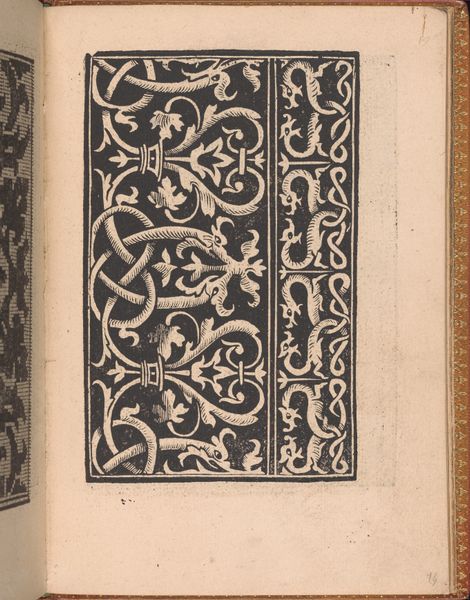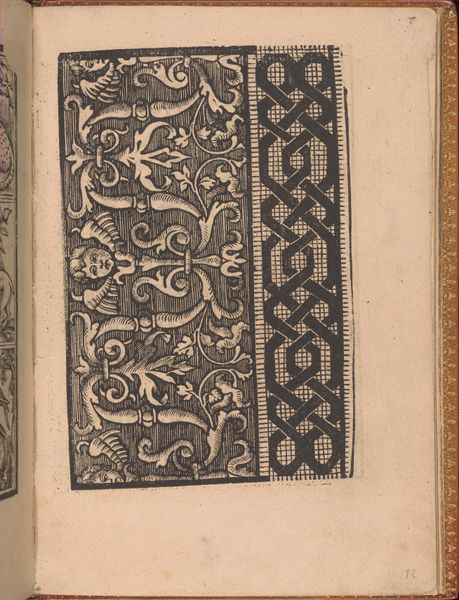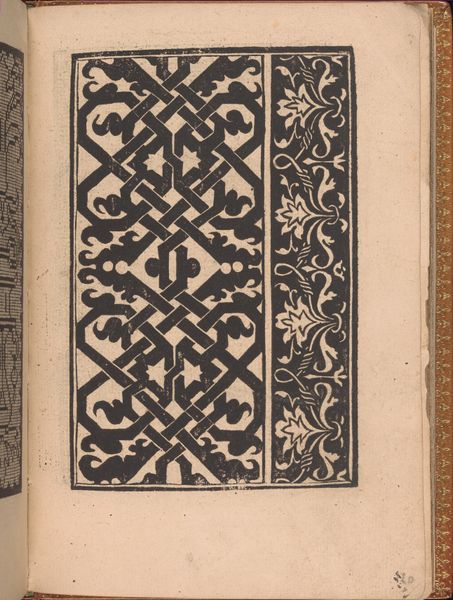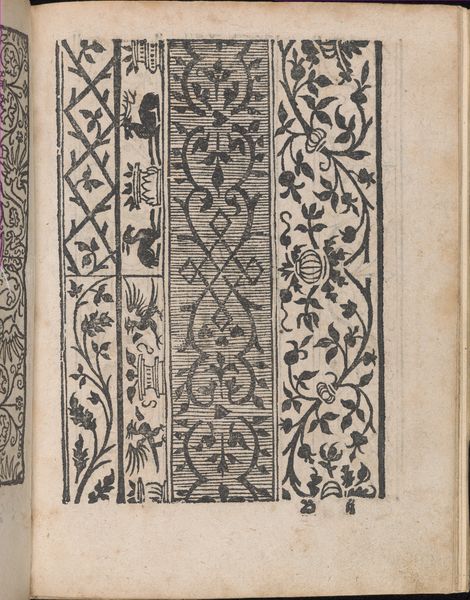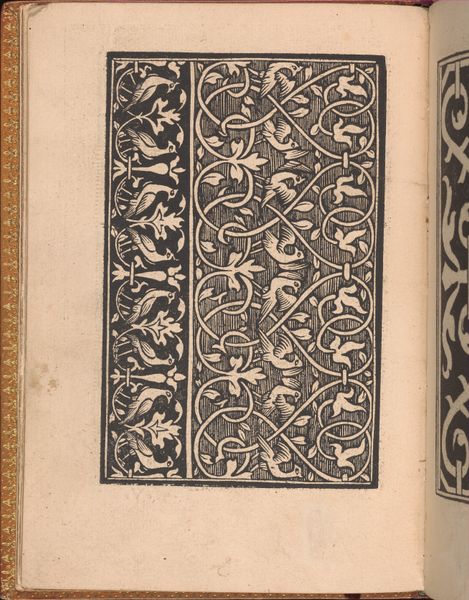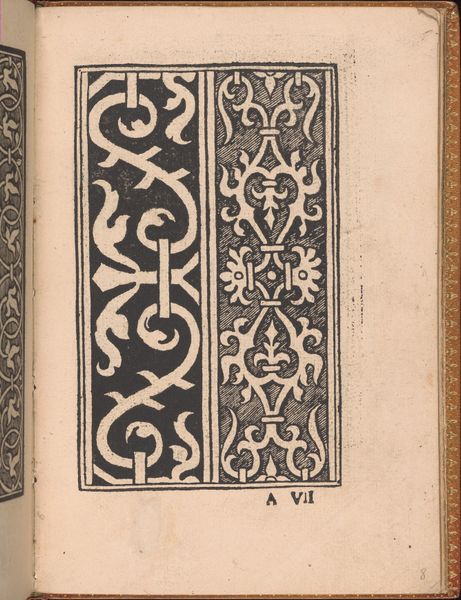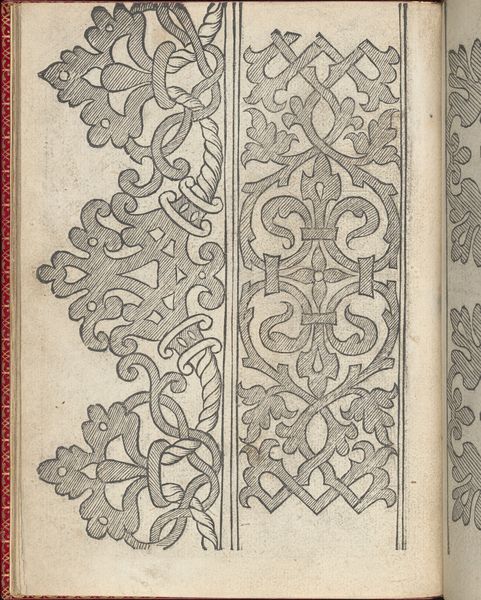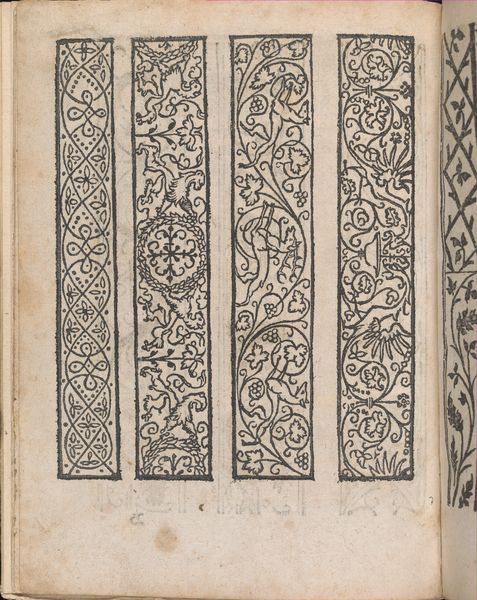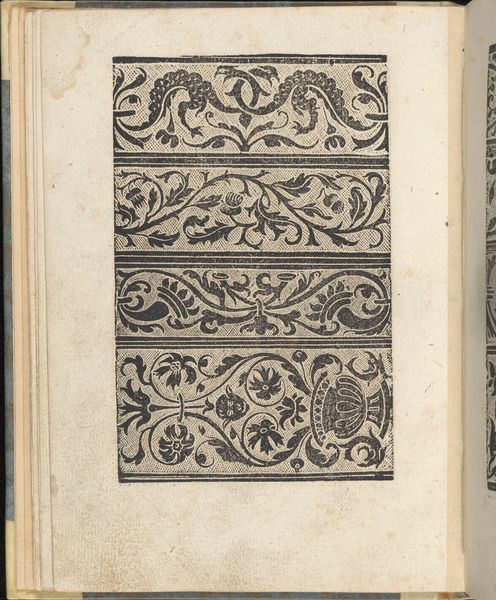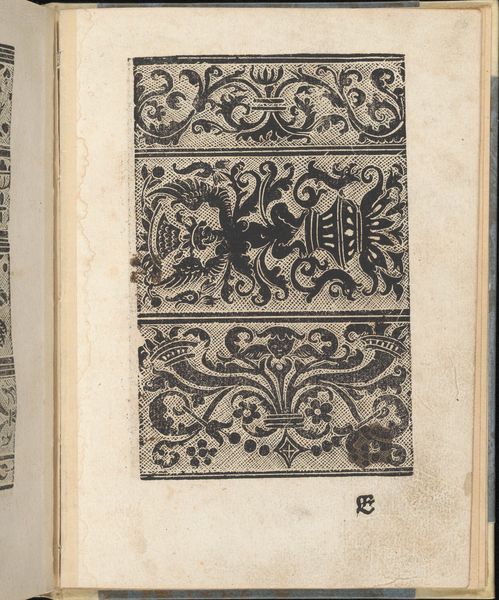
drawing, ornament, print, ink, engraving
#
drawing
#
ornament
#
pen drawing
# print
#
figuration
#
11_renaissance
#
ink
#
geometric
#
line
#
italian-renaissance
#
engraving
Dimensions: Overall: 7 7/8 x 5 1/2 in. (20 x 14 cm)
Copyright: Public Domain
Editor: So, here we have a page from "Convivio delle Belle Donne," created in 1532 by Nicolò Zoppino. It seems to be an engraving, a detailed ornamental design of human and animal forms interwoven with foliage. There's an almost playful, mischievous feel to it, like little cupids are hiding amongst the vines. What do you see in this piece, beyond the initial impression? Curator: This piece, beyond its immediate decorative appeal, speaks volumes about the social function of art during the Italian Renaissance. Consider, “Convivio delle Belle Donne” translates to "The Banquet of Beautiful Women." It invites us to ponder: Who were these beautiful women? Who was this artwork really for, and what role did it play in shaping Renaissance perceptions of gender and beauty? Editor: Interesting. So, you're suggesting we look at it as a kind of social commentary? Curator: Precisely. Think about the rise of the printing press. Engravings like these, while seemingly just ornament, helped to disseminate ideas about beauty, gender, and social order to a wider audience. The very act of depicting these idealized forms reinforces certain power structures and norms, while perhaps excluding others. What’s your take on the prominence of putti? Editor: I see… they seem almost celebratory, suggesting maybe beauty is connected with innocence. But I suppose that could be interpreted differently. Was this perhaps setting expectations? Curator: Exactly! And who creates and consumes such imagery? The artist, the patron, the viewer, they're all complicit in this construction. Considering it in this light invites a whole host of new questions about the cultural dynamics at play. It reminds us art is never truly neutral; it always operates within a social and historical context. Editor: Wow, I'll never look at Renaissance ornament the same way again. I guess even "decorative" arts have a deeper story to tell. Curator: Indeed, thinking critically about these artworks is essential to interrogating historical legacies and imagining possibilities.
Comments
No comments
Be the first to comment and join the conversation on the ultimate creative platform.
